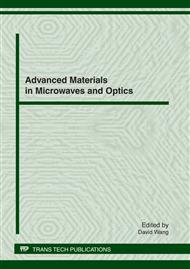p.534
p.540
p.545
p.550
p.556
p.562
p.569
p.574
p.579
The Study on Communication Energy Saving Algorithm of Wireless Sensor Network
Abstract:
Wireless transceiver’s energy consumption takes a high proportion of sensors’ whole energy consumption. Saving wireless transceiver’s energy consumption is significant because of limited energy of wireless sensor network nodes. This paper is based on the model of wireless transceiver’s energy consumption which works in a long distance. Predicted on proving real-time character, this paper poses a long distance low energy consumption scheduling algorithm which adopts dynamic modulation scaling technology combined heuristic algorithm. First, dispatching the modulation level off-line, allocating task and solidifying dispatch result into dispatcher manager. Then, according to the practical transmission time during transmission, adjust the modulation levels again. The simulation experiment proves the algorithm’s effective.
Info:
Periodical:
Pages:
556-561
Citation:
Online since:
January 2012
Authors:
Price:
Сopyright:
© 2012 Trans Tech Publications Ltd. All Rights Reserved
Share:
Citation:


